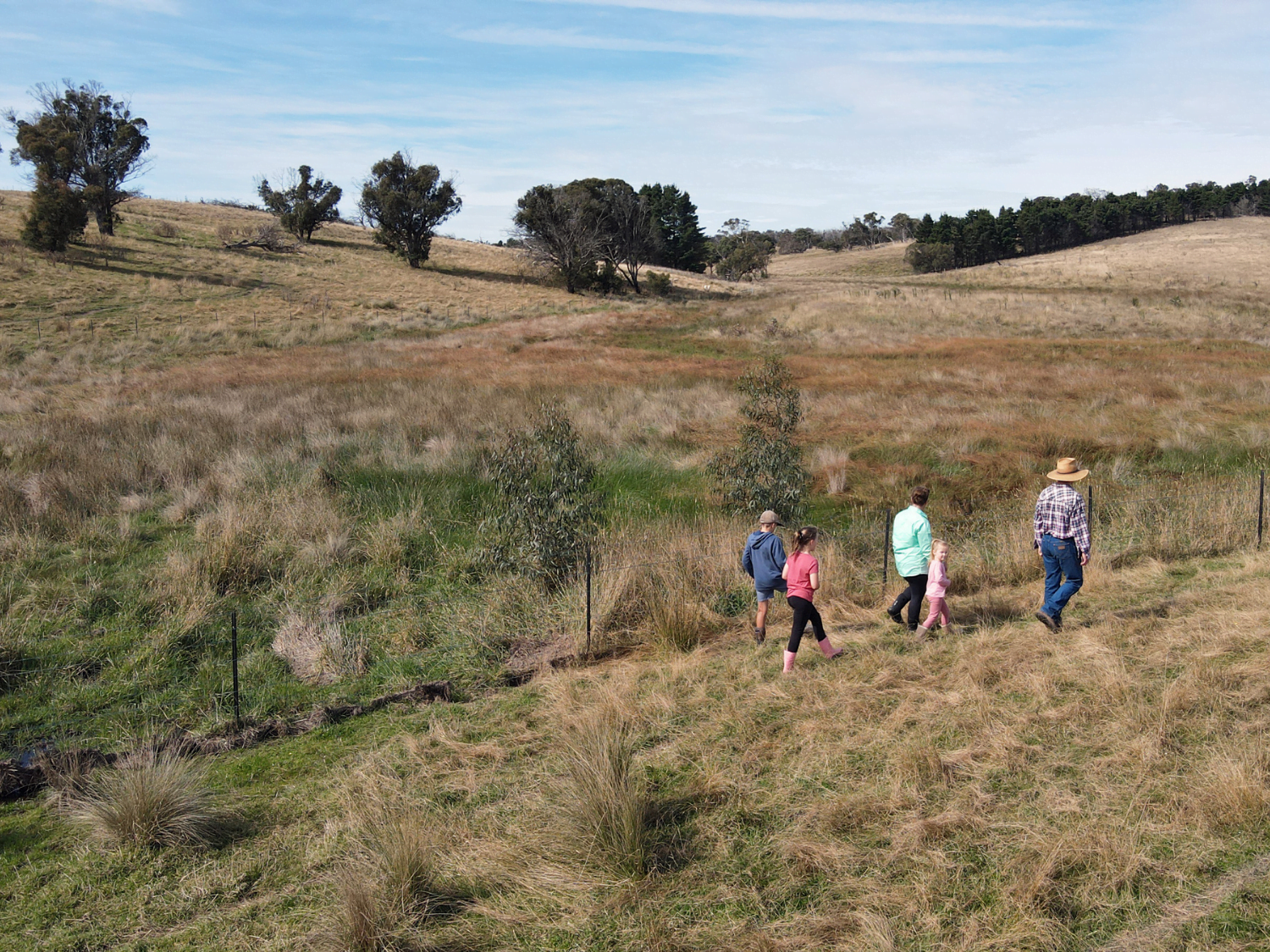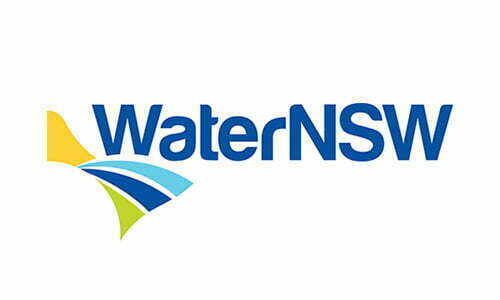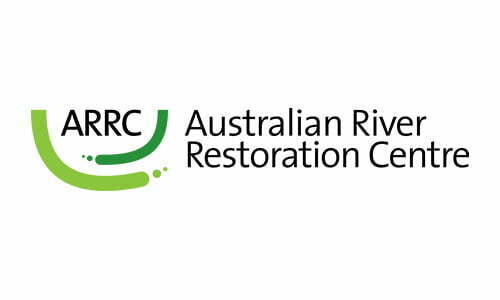“When we save the frogs, we’re protecting all our wildlife, all our ecosystems and all humans”
– Dr Kerry Kriger, Founder of SaveTheFrogs
What are amphibians?
Amphibians are a class of small, cold-blooded invertebrates that need water or a moist environment to complete their life cycle. All amphibians, including frogs, toads, salamanders, newts and caecilians spend part of their life in the water and part of their life on land. This unique characteristic has earned them their name “amphibians” which is a Greek word meaning “double life”.
In Australia, amphibians are the most threatened class of animals because of their porous eggs and semipermeable skin. These traits make them extremely susceptible to environmental threats, such as climate change, pollution and disease. As Kerry Kriger notes in the quote above, protecting amphibians and their habitat is an ecosystem priority.
You may have noticed your amphibian populations booming in the last two La Niña wet seasons. This is fantastic news, but it may not last into dryer conditions. This guide has been designed to help landholders in the Sydney water catchment (southeast NSW – see map) to identify and protect their native amphibians in climate variable seasons. The guide applies to anyone living on and caring for land in southeast NSW and the ACT.
Sub-catchments covered by the Rivers of Carbon – Source Water Linkages Project – Click to enlarge
Our native amphibians – frogs!
In Australia, our only native amphibians are frogs (scientific order Anura).
There are 4000 known frog species worldwide, and Australia has 240 of these. Frogs use their lungs and skin to breathe, regulating moisture and transferring fluid in an important and unique amphibian process known as cutaneous gas exchange. Native frog species have adapted well to harsh Australian environments, with some developing extra water-storage capabilities or waxy skin to prevent dehydration in hot and dry conditions.
Australian frogs range in size from 14 mm (slender-bodied javelin tree frog – Litoria microbelos) up to 135 mm (White-lipped tree frog – Litoria infrafrenata).
Click here for a list of common species and their distinguishing sounds
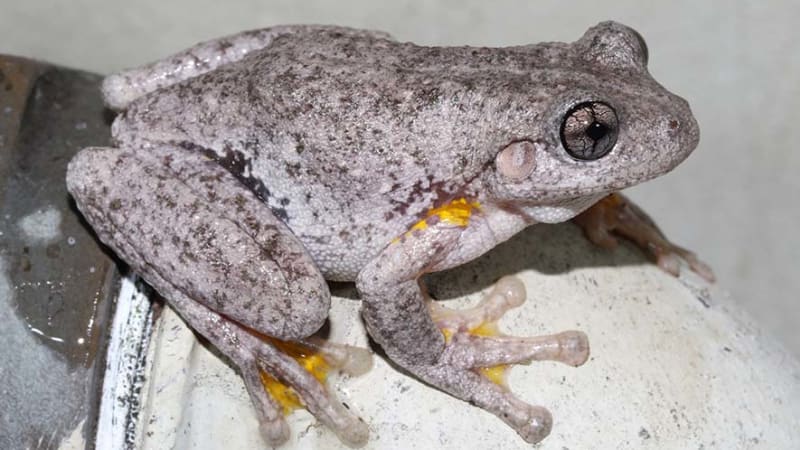

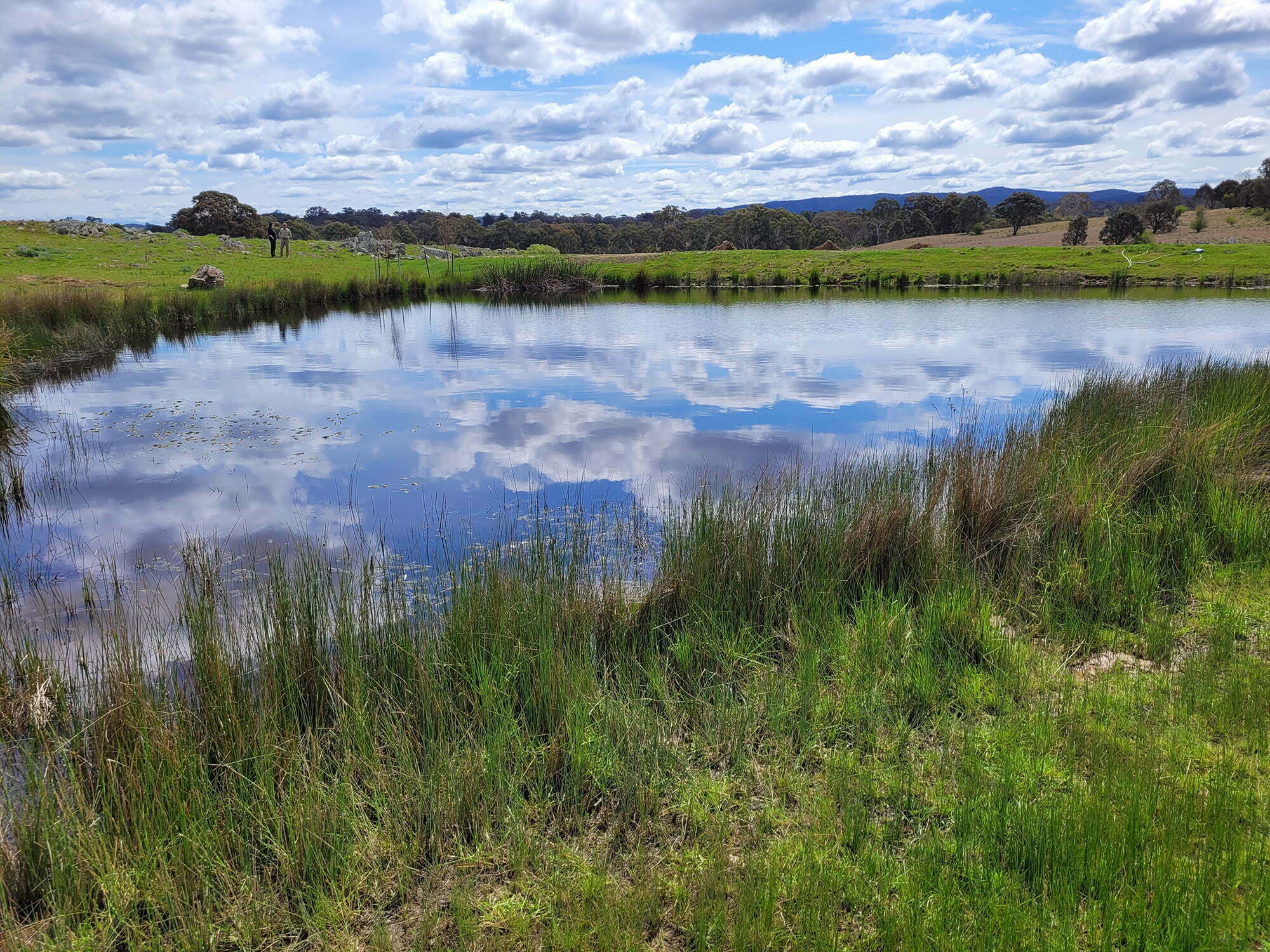
Frogs are an integral part of the food web, at all stages of life. Tadpoles keep waterways clean by feeding on algae. Adult frogs eat insects to keep populations at healthy levels and prevent the spread of disease. As with any healthy ecosystem, they are food for other animals too, including fish, snakes and birds.
Frogs are also bioindicators. Freshwater bioindicators are plants or animals that help determine the health of an ecosystem. With semipermeable skin, frogs are sensitive to environmental stress factors such as changes in water temperature, pollutions, water-borne pollutants. They serve as an alarm bell if something is drastically wrong in their environment. So it’s a good sign if you have frogs, keep up the good work!
How to promote amphibian populations on your property
Agricultural properties are important for Australian’s native frog species. Dams, ponds, wetlands and waterways provide habitat and refuge, especially during dry periods. These water sources enable successful breeding, egg laying, juvenile growth and eventual adulthood. Watch the video below to see how one of our Rivers of Carbon – Source Water landholders, Alex Djikic, is making a difference…
Creating or maintain frog-friendly habitat is one way to contribute to general ecosystem health and protect amphibian populations from decline. So, what do frogs need to thrive?
1. A place to hide from predators
Frogs are predated on by many different types of animals including birds, snakes and turtles. They need good hiding spots like plant cover (on both the banks and in the water), rocks, logs and other structures. This can also be achieved through maintaining good groundcover through managing stock grazing – this is one of the most important management actions for frog survival. This can be achieved by keeping stock away from waterways and riparian land and other management actions like creating alternative water sources for stock. For a comprehensive guide to managing stock around waterways for good groundcover, check out this Stock and Waterways Guide.
2. Protection from hot, dry conditions
As amphibians, frogs need to keep their skin cool and wet in certain life stages. Adults generally achieve this by finding something to bury under which offers them shade and moisture. You can help frogs find the perfect spot by adding thick leaf litter, logs, or rocks near your water sources.
3. Food
Tadpoles consume algae and plants, and adult frogs prey on insects on the water’s edge. This contributes to keeping water clean and ecosystems functional. You can increase food for your resident frogs by thoughtfully planting native species and encouraging aquatic plants to take root (i.e. reeds).
4. A place to breed
Permanent water sources are critical to cultivate successful amphibian breeding, such as ponds, rivers or wetlands. This water must be clean to ensure population health, as mentioned above. To encourage breeding, read up on the specific requirements of your local species. Extend these features into the water where possible to bridge the water-land gap.
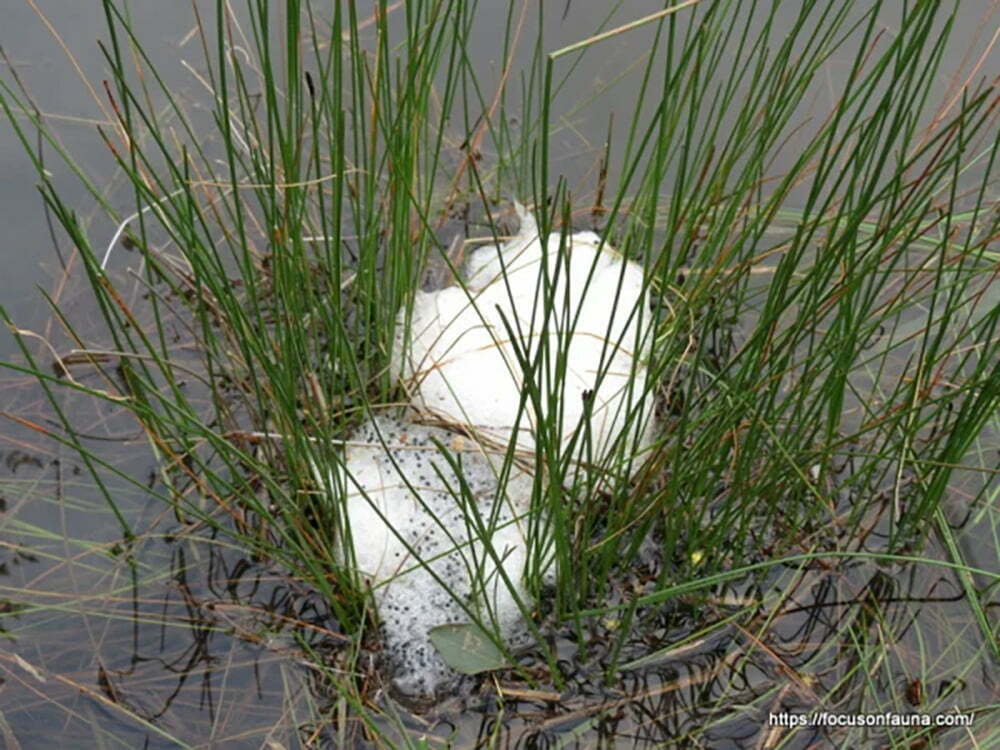
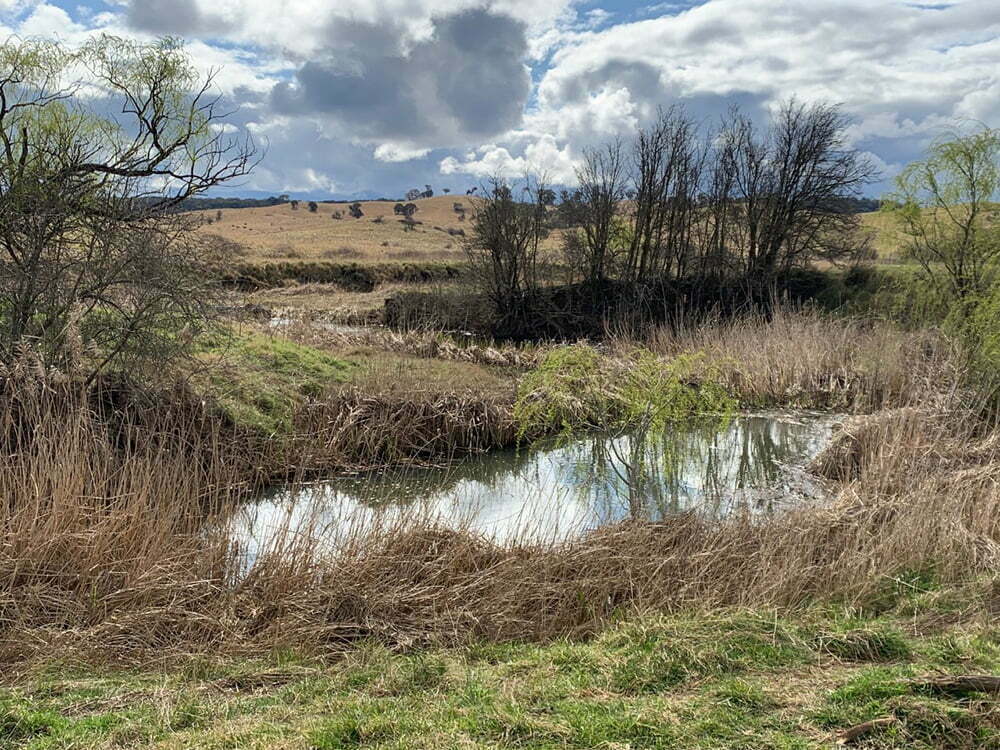
5. Keep them local
It is illegal to move frogs around a landscape, so frogs on your property should not be handled or moved from where you find them. This is particularly important to prevent the spread of harmful diseases, which are spread when diseased frogs are translocated.
Chytrid fungus is a globally found fungus that causes infectious diseases in amphibians. It has a high mortality rate for frogs that come into contact with the fungus, and has caused mass die-offs and even extinctions of four frog species in Australia. As there isn’t a cure to the disease, the best way to prevent it from spreading it to not move the frogs on your property.
The moral of this story is ‘build it (right) and they will come’! The photos below show two examples where landholders from our Source Water Linkages project have improved amphibian populations through thoughtful river restoration activities.
Build it right and they will come!
This is the moral of the story. The photos below show two examples where landholders from our Source Water Linkages project have improved amphibian populations through thoughtful river restoration activities.
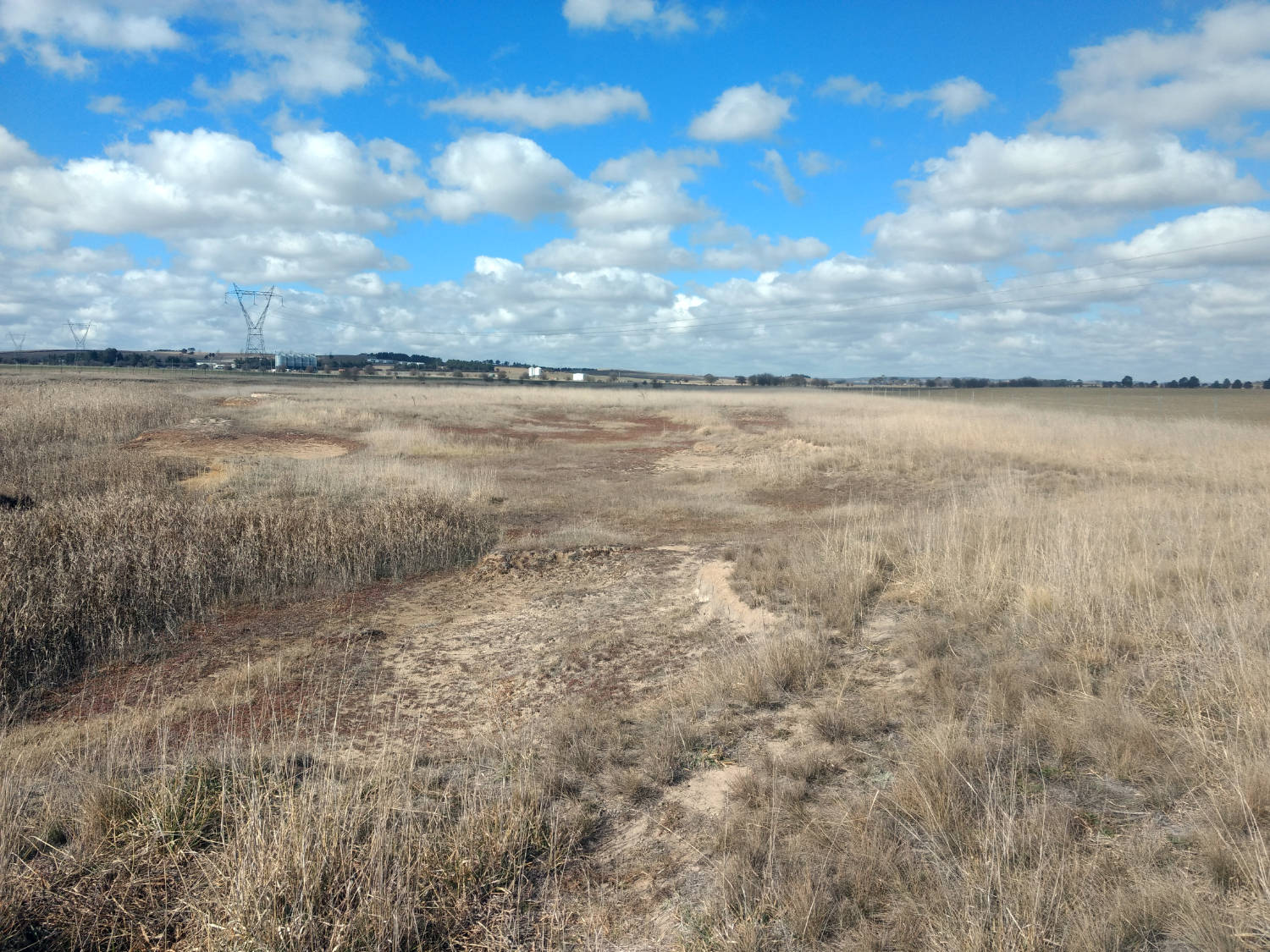
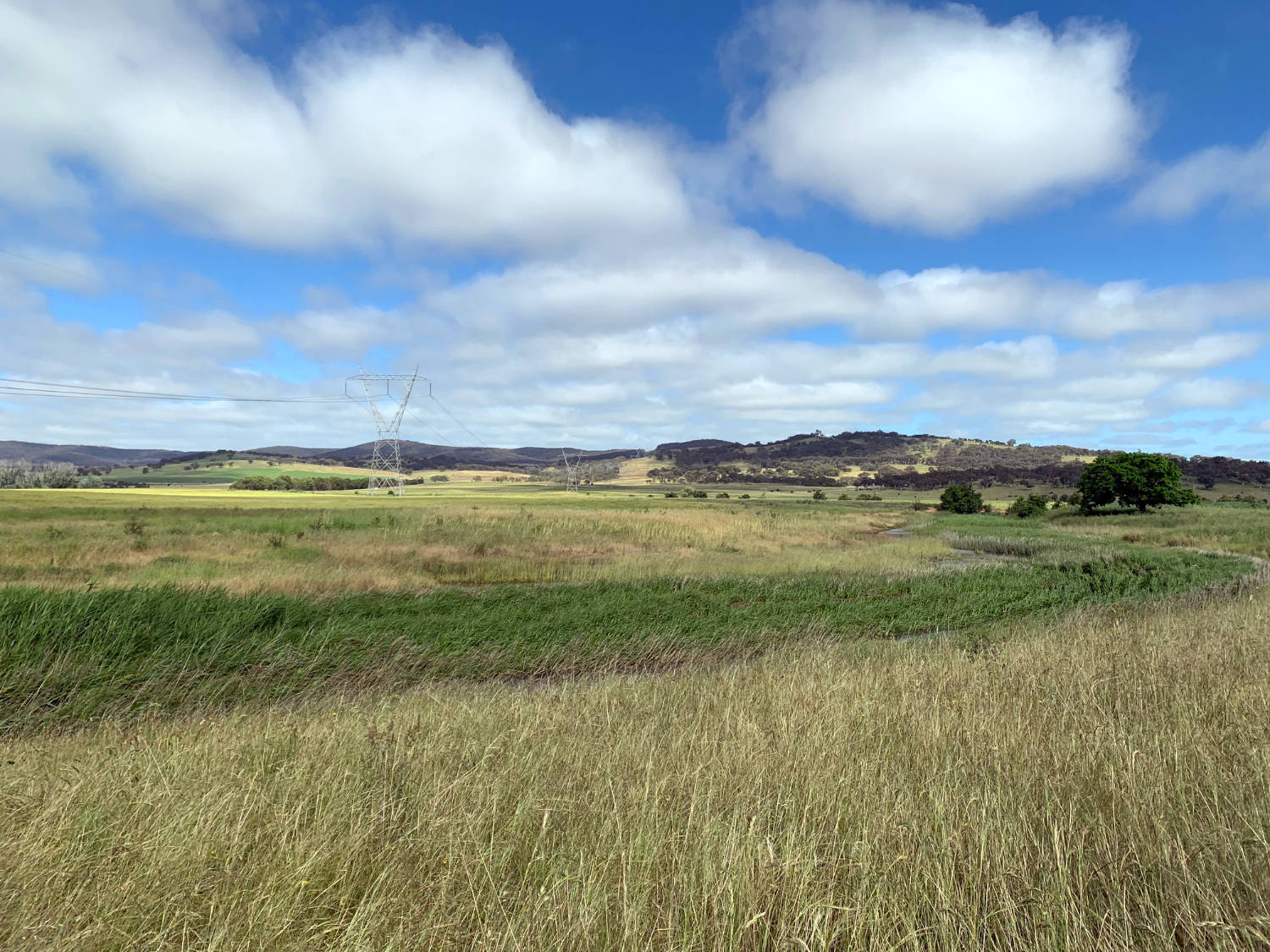
In October 2018 this paddock was home to improved pasture species. By November 2021 the water had returned, encouraging the growth of native reeds and providing a life source for the planted tube stock.
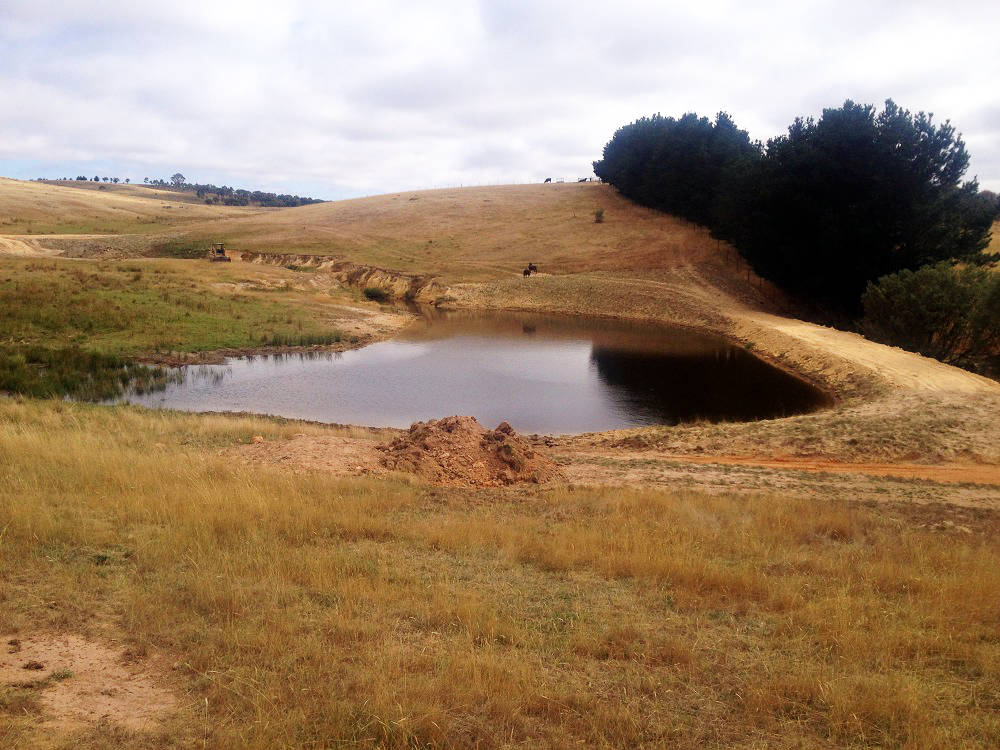
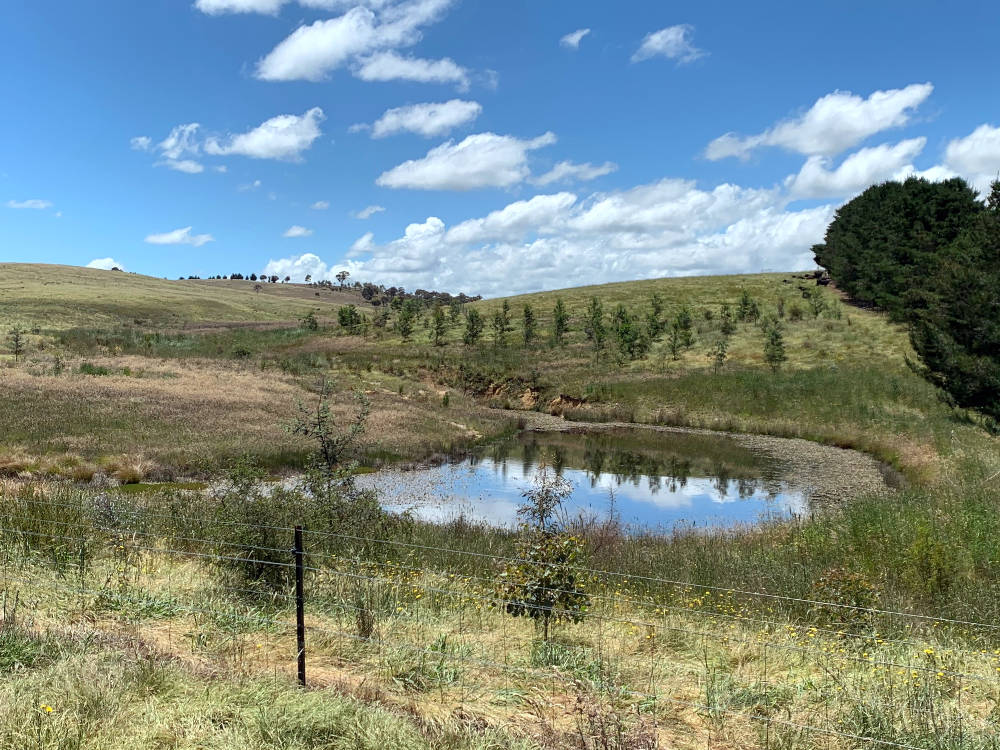
This dam was planted out beginning in February 2017. By November 2021, the tube stock have begun to mature around the water helping to secure the soil when ground cover reduces.
Common species and their distinguishing sounds
We have focused on the six most common frog species found in southeast NSW. This region is characterised by swampy meadows and chain of ponds ecosystems that help native frog species thrive when away from larger water sources. We hope the visual description, preferred habitat and unique call sound help you to identify these frogs on your property.
Plain’s Froglet (Crinia parinsignifera)
A small ground-dwelling frog, often found in woodlands and floodplain under logs or debris for shelter. Adults in this species groups together in moist depressions and lay their eggs in dams, swamps and flooded grasslands nearby.
Call sound: drawnout “wrreeeeeeeekkkkk”
Sounds like a squeaky baby
Read more about this species at FrogID here
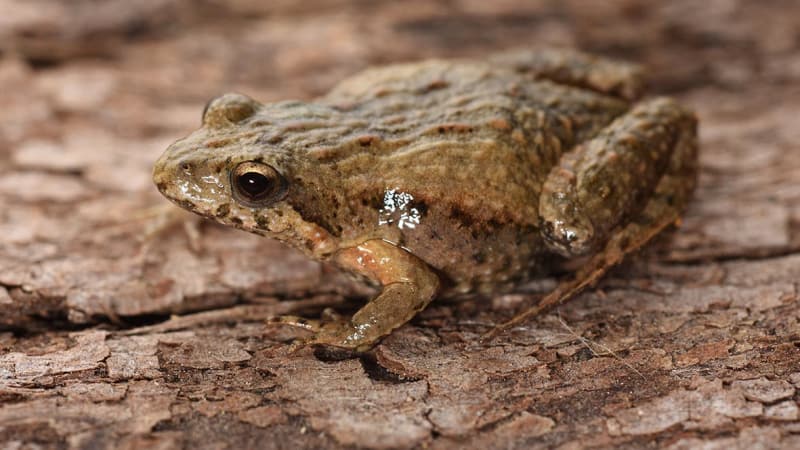
Common Eastern Froglet (Crinia signifera)
As Australia’s most common species, this frog is found in Eastern Australia, including Tasmania, where adults find refuge in grasslands. Breeding can occur all year round, often in streams, dams, bogs, marches and ponds, where permanent water can be ensured.
Call sound: “crick, crick, crick, crick, crick”
Sounds like a ratchet
Read more about this species at FrogID here
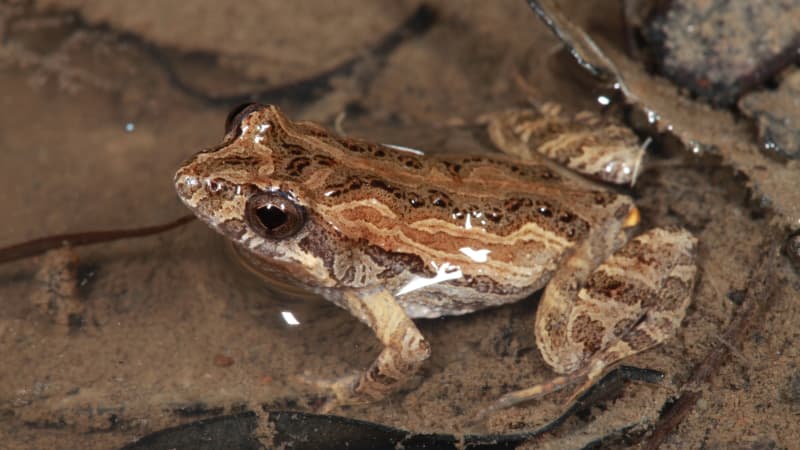
Eastern Banjo Frog (Limnodynastes dumerilii)
Populations of this frog have been known to span Eastern Australia, including Tasmania, and are often found in urban or disturbed areas. You may have spotted them in local waterways, backyards and even sandpits! The Eastern Banjo Frog also believes in parental care, with the females known to carry air bubbles from the water surface to the eggs to keep them oxygenated and wet.
Call sound: distinctive and loud “bonk”
Sounds like a bass banjo being plucked
Read more about this species at FrogID here

Striped Marsh Frog (Limnodynastes peronii)
This is a larger species (up to 7.5cm in length) with distinctive black and brown stripes down into back ridge and a pale strip under each eye. Like many frogs, their eggs are laid as a foamy mass on moist vegetation on the edges of water bodies like ponds, lakes and dams. Their tadpoles (juveniles) can reach 9.5cm in length before growing into fully-fledged frogs within 7-9 months.
Call sound: distinctive single “pop”
Sounds like a wet tennis ball hitting a wall
Read more about this species at FrogID here
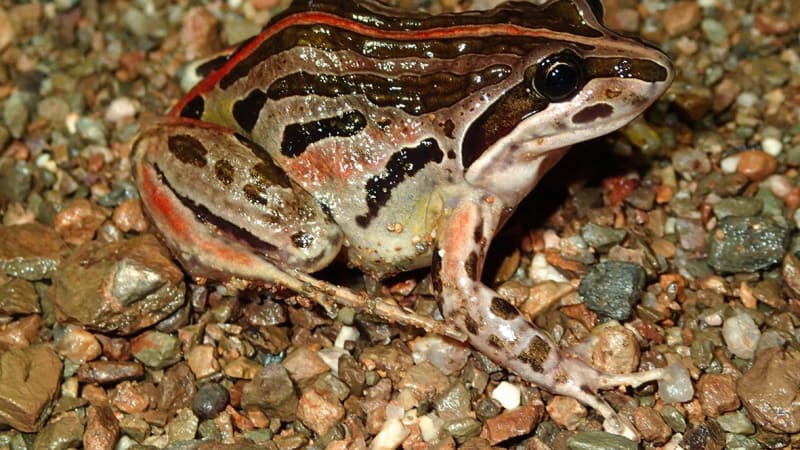
Spotted Grass Frog (Limnodynastes tasmaniensis)
A medium-size species, identifiable by olive-green patches ringed with brown or black. Males also have a distinctive yellow throat during the mating season which helps to identify them! This species travels further inland from Australia’s east coast, reaching national parks on the border of QLD, NT and SA.
Call sound: “kuk, uk, uk, uk, uk”
Sounds like a machine gun
Read more about this species at FrogID here
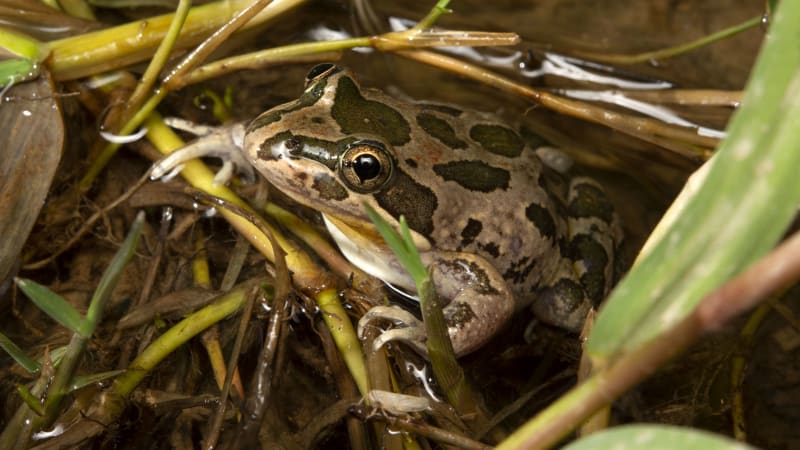
Peron’s Tree Frog (Litoria peronii)
This species can be found in southeast QLD, and nearly all of NSW and VIC. They are uniquely coloured, with a thin black line stretching from the eye down to the top of the eye and tiny emerald spots along its back. Keep an eye out for their gold tadpoles in spring and summer after big rains!
Call sound: rattle or crackle
Sounds like a maniacal laugh
Read more about this species at FrogID here

We hope this guide had given you ‘frog spotting’ bug and that you find some of these frogs on your place. For more resources we recommend these publications and websites:
Further reading
- Land for Wildlife ‘Creating Frog-Friendly Habitats’
- Australian Museum ‘Australia’s Native Frogs’ section
- Ginninderra Landcare ‘Frogs pamphlet’
- Toads n Frogs ‘Why are Toads and Frogs important?’
- Frog and Tadpole Group ‘Frogs as Bioindicators’
Resources
We can help you as you begin your journey creating frog friendly habitat. The Rivers of Carbon – Source Water project is currently offering incentives for landholders to protect their waterways by fencing out livestock, installing alternative water sources, planting native vegetation, and controlling active erosion points. These efforts help to promote ecosystem health, encouraging healthy populations of native animals, including our fabulous frogs.
or reach out to us today to talk about how you can get involved!
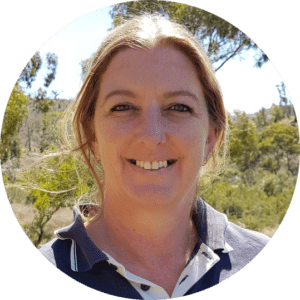
Program Manager
Phone: 0439 030 058
lori.gould@arrc.com.au
